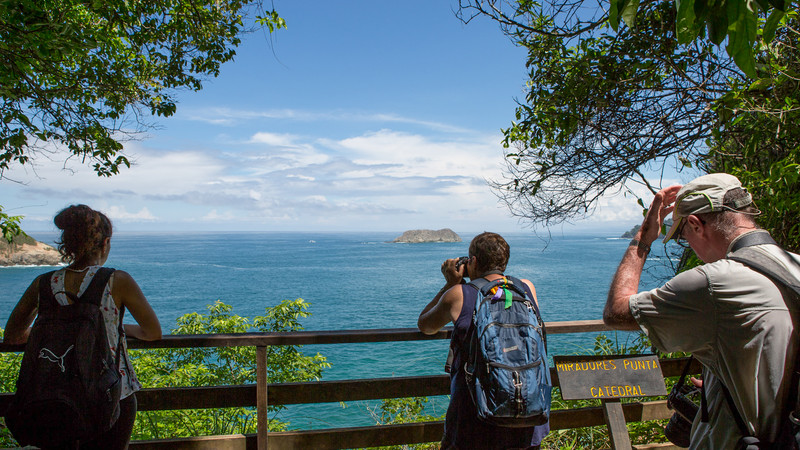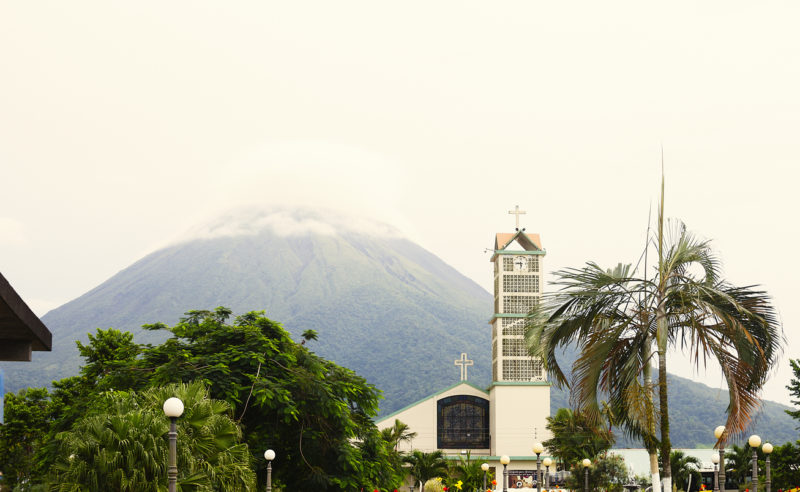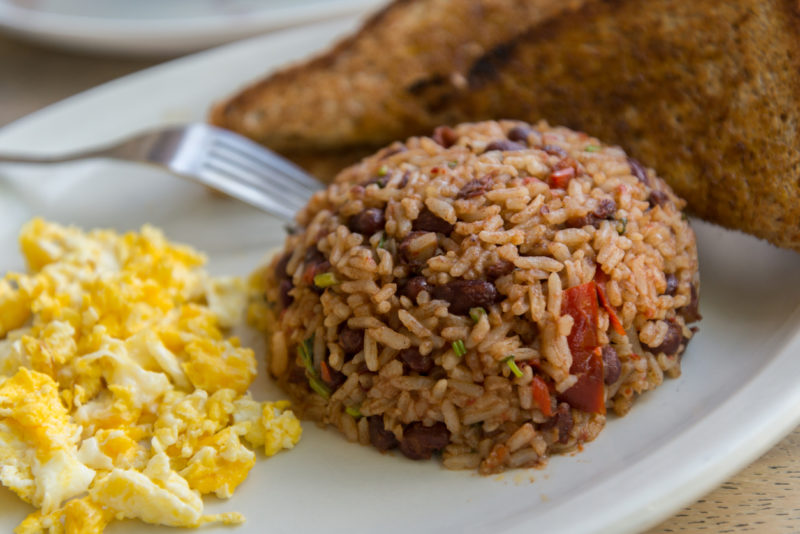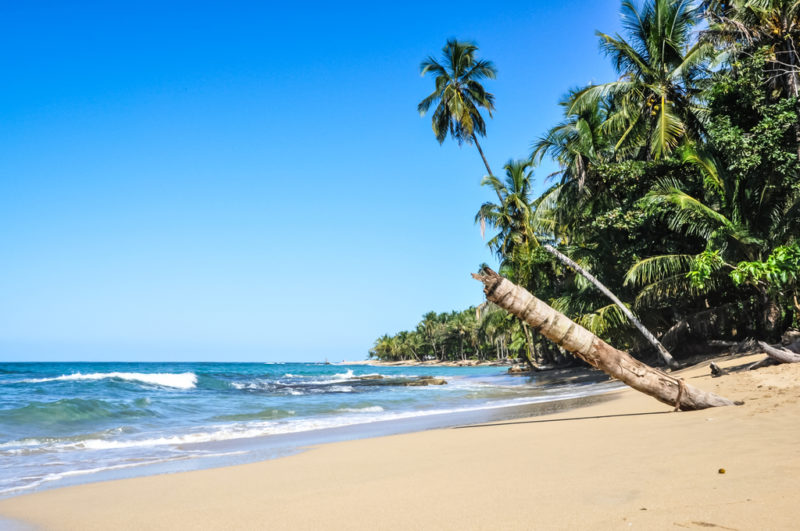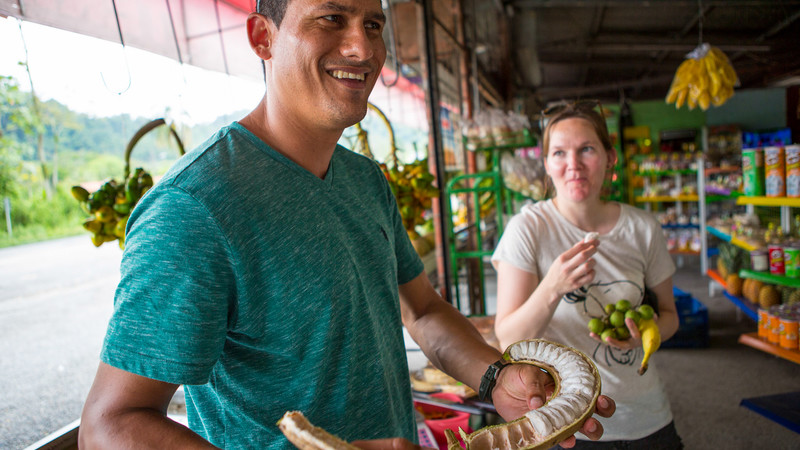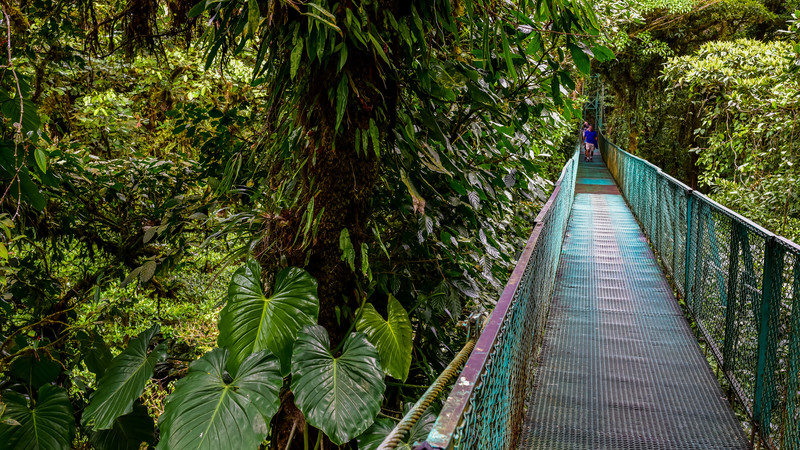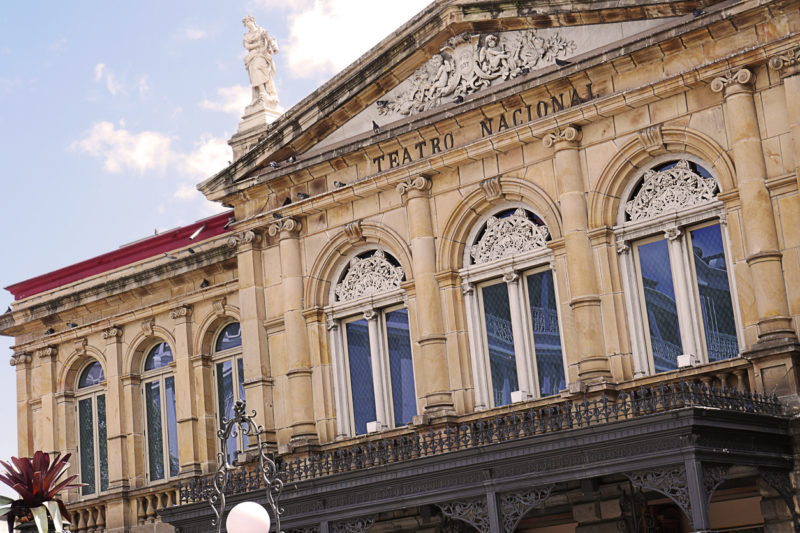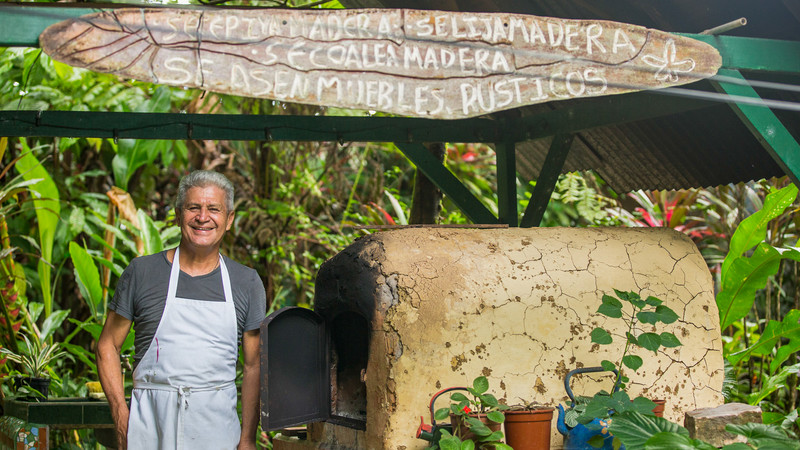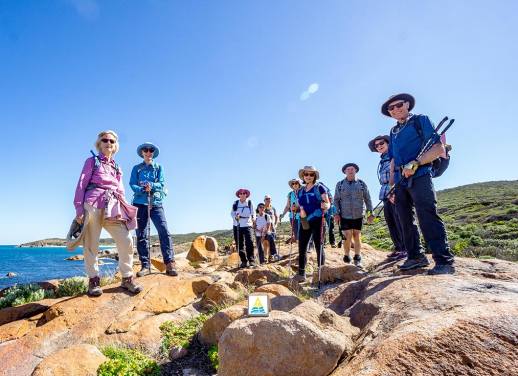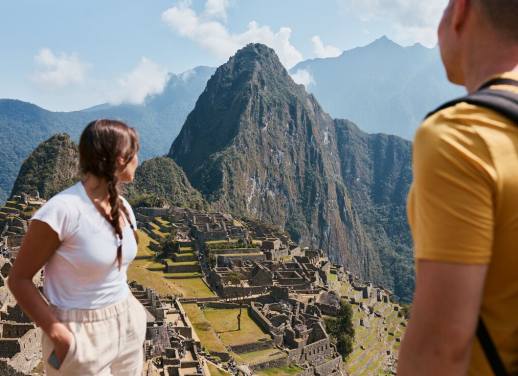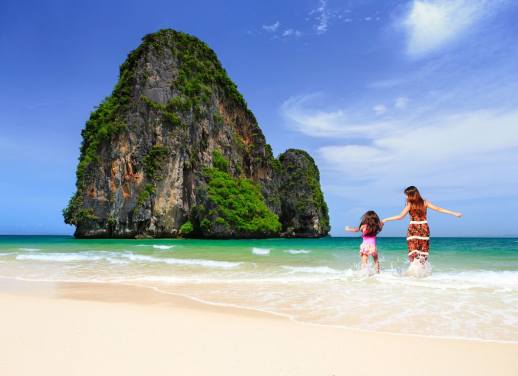Costa Rica has long been a top destination for ecotourism and adventure travel.
You probably know it’s got top-notch surfing beaches, miles of rainforest to explore, and bird-watching and sloth-spotting opportunities aplenty, but I’ve rounded up a few Costa Rica facts that might not be common knowledge.
There are no street addresses
You read that right. Most of Costa Rica has no street names and no numbers on buildings. In recent years, to ease some of the confusion, many cities have added street signs. San Jose now has a gridded network of calles (streets that run north/south) and avenidas (avenues that run east/west) that are fairly easy to navigate. But if you’re outside of the city center, you’ll be using the charming, but sometimes frustrating, landmark system.
Directions are given in relation to well-known places using compass directions. The Ticos are used to this system, so finding “75 meters northwest of the old church, the building with the green door” might seem intimidating to you, but your taxi driver won’t be fazed.
If you do find yourself lost, try to spot a church to orient yourself. Costa Rica is a Catholic country with many churches, and they almost all face west (so churchgoers can face east toward Jerusalem). If, by chance, that door you’re looking for was painted a different color or that tree was cut down, the friendly locals are used to “historical” (read: non-existent) landmarks and will likely be able to steer you in the right direction.
KNOW YOU’RE HEADING IN THE RIGHT DIRECTION ON A LOCALLY LED SMALL GROUP ADVENTURE
There’s some controversy over the origin of Costa Rica’s most traditional food, gallo pinto
Gallo pinto is the ubiquitous side-dish in Costa Rica, served morning, noon and night. (Seriously – McDonald’s even has a McPinto on the menu). This dish is made of rice, beans, onions, peppers and spices, and it literally means “speckled rooster” because of its coloring. Its origin is the subject of an intense rivalry between Costa Rica and Nicaragua. Both countries claim ownership of the dish, but the true history is not well-known.
The most likely origin of the dish is actually Africa. When people from Africa (mainly Benin, Togo and Ghana) were taken to Latin America and the Caribbean to work on the plantations as slaves, they were given a diet of rice and beans since they were cheap staples and a good source of nourishment.
The theory is that Nicaraguans and Costa Ricans brought back versions of the dish to their respective countries and both claimed it as their own. While Nicaraguans tend to make gallo pinto with red beans and Costa Ricans usually use black beans, the dishes themselves are very similar and, in my opinion, equally delicious. I guess the only way to determine who makes it best is to visit both Nicaragua and Costa Rica and sample both versions for yourself!
READ MORE: THE ULTIMATE GUIDE TO 7 DAYS IN COSTA RICA
Costa Rica is a linguistically diverse country
Spain conquered Costa Rica in the 16th century, so the official language is Spanish, but there are several other prominent languages spoken throughout the country, too. About 10% of the adult population speaks English. This is largely due to tourism (especially from North America) being one of the main industries here, as well as the large community of expats. Costa Rica values education highly and encourages second language learning, so another 0.7% speak French as a second language.
There are also five indigenous languages that are all part of the Chibcha language family, and with help from the government to protect them, are still spoken to this day. Limonese Creole (also known as Mekatelyu or Patua), a dialect of Jamaican Creole, is commonly spoken along the Caribbean coast. It was brought to Costa Rica by migrant workers from neighboring Jamaica who worked on railways and banana plantations. In fact, the Caribbean coast sees a lot of Jamaica’s influence with an interesting fusion of cuisines (curried goat goes well with gallo pinto) and a number of Reggae bars.
PRACTICE YOUR SPANISH SKILLS WITH AN INTREPID TRIP THAT INCLUDES A LOCAL HOMESTAY
Ticos brush their teeth after every meal
When I was living and working in Costa Rica, I was puzzled when I first noticed that all my coworkers would sneak into the bathroom with a toothbrush after our lunch break. I thought maybe I just worked with a few people who all happened to have chronic halitosis, but then I realized this was a common habit all over the country. In the bathroom at the mall or the local soda, I would often spot people brushing their teeth.
A friend I met who was studying abroad at the University of Costa Rica explained it to me: apparently a few years ago there was a huge health push by the government to brush your teeth more, so you wouldn’t have to visit the dentist as much.
While this is by no means a habit that’s exclusive to Costa Ricans, it was an interesting little case of culture shock for me and my fellow North Americans. And as a lover of coffee, but a hater of coffee breath, it’s something I can totally get behind.
SUBSCRIBE TO OUR NEWSLETTER FOR TRAVEL INSPO, GIVEAWAYS, COMPETITIONS & MORE
Costa Rica is a pioneer in sustainability
Okay, maybe this isn’t totally a little-known fact. Considering ecotourism and Costa Rica practically go hand in hand and over 25% of the country is protected land, it’s not exactly a surprising fact that Costa Rica is a fan of environmentally-friendly practices.
What you might now know, though, is that Costa Rica is one of the greenest countries in the world. It’s predominantly powered by renewable resources and plans to be the first country to become completely carbon neutral by 2021. As a part of the 2021 plan, they’re also aiming to ban all single-use plastics.
Costa Rica also has some unique ways of reducing fuel emissions. In downtown San Jose, depending on the last digit of your license plate, you are not permitted to drive one day per week. So, for example, if your license plate ends in 1, you can’t drive on Mondays. This is done partially to alleviate traffic, but it also helps reduce emissions by limiting the number of cars on the road and encouraging people to share rides or take public transport.
DID YOU KNOW? INTREPID TRAVEL IS PROUD TO BE A CARBON NEUTRAL COMPANY
The National Theater has very little Costa Rican influence
The Teatro Nacional (National Theater) is a beautiful historic building that is a venue for plays and concerts in San Jose. The creation of the theater is a testament to the unity of the Costa Rican people. In 1888, earthquakes destroyed the Municipal Theater, which left the community in need of a new performance space. The coffee growers of Costa Rica banded together and imposed a tax on their own product to raise funds to build a new theater. It took six years, but the completion of the theater was a national source of pride.
However, the theater itself doesn’t feature a lot of Costa Rican influence. It is modeled after the Paris Opera House and built in the neo-classical style, with a columned exterior and a lavishly furnished interior. The two statues flanking the outside of the building are of Spanish dramatist Calderon de la Barca and German composer Ludwig van Beethoven. The inside features a large mural, “The Allegory of Coffee and Bananas”, that pays homage to the coffee growers who helped build the theater, and bananas, the other main export of Costa Rica.
But the artist who painted it never actually set foot in Costa Rica, so there are a few inaccuracies. It depicts coffee being grown at the beach (when, in fact, it’s grown at much higher altitudes). There is also an image of a man holding a bunch of bananas the wrong way (traditionally, bunches are held over the shoulder, otherwise the bananas fall off)!
Pura Vida isn’t just a catchphrase — it’s a lifestyle
Everywhere you go in Costa Rica, you’ll hear people saying, “pura vida” as a greeting or a farewell. And while “the pure life” may sound like a surf shop’s motto, it’s an accurate encapsulation of how Ticos go about their lives. It’s something you can’t truly understand until you experience it, but I’ll do my best to explain. Pura vida is both an attitude and a feeling; it means being friendly and polite; it means taking it easy, relaxing, and being thankful for what you have.
This unofficial motto has served the Costa Rican people well. They are consistently ranked among the happiest people in the world. It’s easy to see why: Costa Rica has a literacy rate of 97% and an extremely high life expectancy, they are the oldest and most stable democracy in Central America, they have no standing army (it was abolished in 1949 with all funds reallocated to create an “army” of teachers instead), and they are generally one of the most progressive and prosperous nations in Central America.
Brian, one of Intrepid’s local leaders says, “It is something that people understand right away when they experience it, and it’s the first thing that they love. Everything else you can read about online, but not that pura vida feeling.”
Yearning for that pura vida feeling? Check out one of our small group adventures to Costa Rica.
—
(Image credits from top to bottom: Intrepid Travel, iStock/stellalevi, iStock/Esdelval, Intrepid Travel x3, iStock/aceshot, Intrepid Travel)

